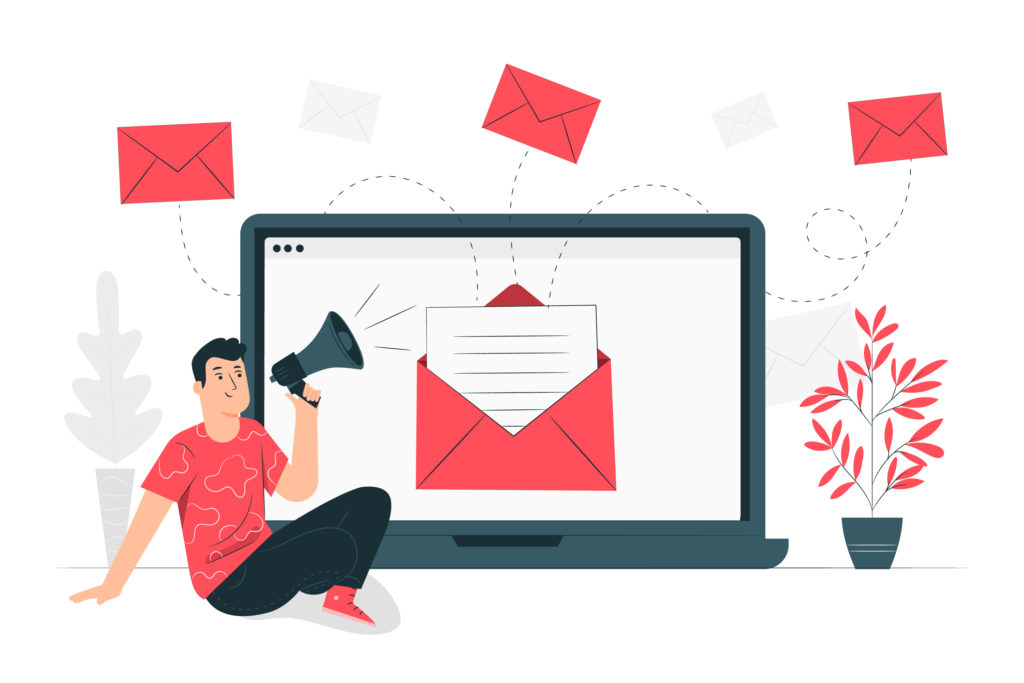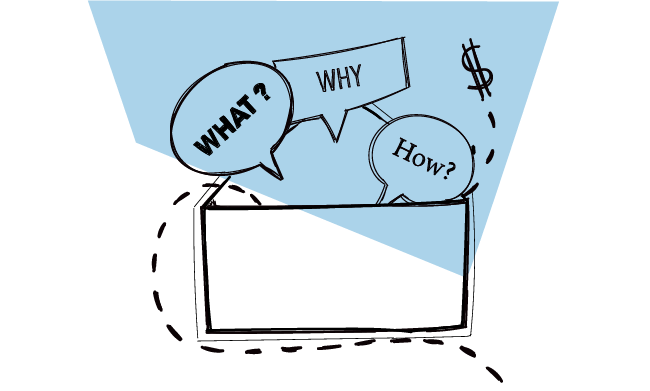Hello!
What separates good marketing from spam? Relevance.
Relevance distinguishes thoughtful, value-driven emails from those desperate LinkedIn messages asking you to buy something as soon as you connect with someone.
“To sell well is to convince someone to part with resources — not to deprive that person, but to leave [them] better off in the end.”
Daniel Pink’s thesis in his book To Sell Is Human reminds us that sales doesn’t have to be an expedient.
Instead, persuasion can be an act of positive change, an experience that connects people to goods, services, or knowledge that actually improve their lives.
Look, I get that’s pretty aspirational. But it’s a worthwhile standard to aspire to. If you only consider sales in the context of increasing your KPIs, your marketing will start to take on spam-like characteristics.
Sure, you might get a few more conversions each month because you broke down a few people in your database, but you won’t be building any type of relationship with your audience.
However, if you do your research and uncover what actually matters to your customers, you can not only increase your conversions, but also market to your customers in a way they appreciate.
That’s a universal principle of data-driven marketing, but since email remains one of the best (if not the best) mediums for selling, this article focuses on how to write sales emails people actually like.
We’ll cover what research you must do, how to apply that research to your copy, and write a compelling email.
We are copywriters, so this article focuses on using this process which should help you to write sales emails that people like. That’s a good thing, because everyone — from customer success to sales to marketing — could use better email copy.
Get to Know Your Audience (Like, For Real)
Relevance is persuasive. That’s a fundamental, unalterable truth about sales and marketing.
Spam is the absence of relevance. We’ve all had those uninvited LinkedIn messages pitching us something we have absolutely no need for.
 The people sending these messages aren’t necessarily bad at their craft. They very well might be able to do exactly what they say they can. But it doesn’t matter, because it’s not relevant to you.
The people sending these messages aren’t necessarily bad at their craft. They very well might be able to do exactly what they say they can. But it doesn’t matter, because it’s not relevant to you.
The antidote to spam is research. The more you know about your audience, the better you’re able to attune your messaging to your audience’s day-to-day reality. And the more in tune you are with your audience, the more likely they are to buy from you.
To learn this stuff, you’ll need to create a survey and do some interviews — you know, typical research stuff.
Here are the specific areas you really want to explore:
Fears, Challenges, and Outcomes
Digital marketing has an empathy problem. Since we don’t often (if ever) talk to our customers face-to-face, there’s a disconnect between how we perceive them and how they actually are.
 To bridge that gap, you should focus on understanding three main areas about your customers:
To bridge that gap, you should focus on understanding three main areas about your customers:
• Their fears (whether personal or professional)
• The outcomes they want to achieve
• The challenges they face to realize those outcomes
We know none of this sounds groundbreaking, but too many marketers assume they understand these things about their audience when they really don’t.
We used to work at a UX design agency for awhile, and our clients constantly assumed they understood how their users did their tasks. Whenever we suggested user research, the clients often turned us down.
Fast forward a few weeks, and the results weren’t what the client was hoping for. Turns out, they didn’t actually understand how their users completed tasks.
The moral of the story is never assume you don’t need research, because you almost certainly do.
Learn How Customers Talk
Words matter. So you want to find out which words your customers use to describe the stuff we mentioned in the last section.
 This is often called voice of customer (VoC) research, and it provides you with a treasure trove of qualitative data you can use in your copywriting.
This is often called voice of customer (VoC) research, and it provides you with a treasure trove of qualitative data you can use in your copywriting.
Luckily, doing VoC research isn’t that difficult. If you’re using surveys to do your research, then just ask some open ended questions. Your response rate might drop a little, but the tradeoff is worth it.
Once you understand how your audience articulates their challenges and desires, you can use those exact words in your sales emails. This can go a long way to convincing your prospects that you really get them, which can make them more likely to buy.
By learning what matters to customers and articulating those feelings in the same way they do, you can establish credibility in your emails. Most people ardently believe that brands don’t understand them, so when you do it shows, and people appreciate it.
Use a Compelling Copywriting Model
The content of most emails is structured poorly. Given the incredible competition we all face for our customers’ attention, that’s a problem.
The way to solve it is to structure your content in a way that’s exceptionally compelling. After all, the goal is to keep people reading so you can sell them.
Luckily, you have a decent amount of options when it comes to structuring your email. We won’t go into them all here, but you can find a comprehensive list here. For now, let’s focus on PASO.
The Best Copywriting Formula for Email
PASO stands for Problem, Agitation, Solution, Outcome.
You should structure your emails in that order and use the things you learned from your research to fill each section.
This email from Jon Morrow at Smartblogger.com uses the formula perfectly:
 PASO is a tried and true formula that’s been used for decades by professional copywriters. The reasoning is simple: people want a resolution to their problems. By isolating those problems and agitating their effects, your emails will better stir your customers to act once you introduce a solution later in the email.
PASO is a tried and true formula that’s been used for decades by professional copywriters. The reasoning is simple: people want a resolution to their problems. By isolating those problems and agitating their effects, your emails will better stir your customers to act once you introduce a solution later in the email.
Now, you’re probably wondering “Won’t talking about problems seem too negative?” There’s certainly a balance you need to strike with your tone. Don’t be too overbearing.
In the above email, Jon Morrow doesn’t pour it on too thick. In his agitation copy he simply writes “I could only write a blog post in a day or two. It was embarrassing, but I thought it’s just how I worked.”
He does enough to convey the consequences of the problem, but he’s not claiming that the problem was so egregious that it ruined his life. Be specific, but show restraint.
If you did your research correctly and speak to real problems your audience is facing, people are going to dig it. In the best cases, you’ll evoke that classic “you-read-my-mind” feeling.
So while it may seem counterintuitive, leading with problem-oriented copy can produce a positive reaction — as long as you don’t go too hard and finish with a clear, compelling solution.
Target the Customer’s Stage of Awareness
The final ingredient to writing sales email people like is aligning your messages to where people are in the sales funnel. Like we saw earlier, if you just start blasting randoms about buying your product, it’s not going to work.
The indelible copywriter Eugene Schwartz broke the customer journey down into stages of awareness. As someone becomes more aware of the problem your product solves — and then consequently your product — your messaging should shift to reflect the customer’s new perspective.
Your email marketing’s job is to not only communicate the information someone needs at their current stage, but also to educate and persuade them into moving onto the next stage. That’s another form of relevance: providing information that corresponds to your prospect’s current level of awareness.
 Here’s a classic mistake: if your prospect just downloaded an eBook about Facebook ads, you should not start pitching them to buy your product. They’re probably in the Problem Aware stage, so they’re just looking for more information about how to advertise their business.
Here’s a classic mistake: if your prospect just downloaded an eBook about Facebook ads, you should not start pitching them to buy your product. They’re probably in the Problem Aware stage, so they’re just looking for more information about how to advertise their business.
You’ll have more luck if you email them an invitation to a webinar that covers how companies have successfully advertised on Facebook in the past. That would also be a good time to mention your type of product, which could help the prospect understand what solutions they have to solve their problem.
That’s a logical next step, and the prospect is going to appreciate it far more than if you simply ask them to sign up for a demo.
It sounds simple, but many of the most powerful marketing strategies are straightforward at their core. It doesn’t mean they aren’t effective. Aligning email with the right stages of awareness helped Copyhackers improve Wistia’s paid conversions from email by 3.5x.
Apply These Copywriting Tips And Propel Your Business
In summary, you have to understand what’s relevant to your audience before you write sales emails.
 Here’s how you do that:
Here’s how you do that:
• Review your current personas and customer research
• Update them with voice of customer data
• Pick out your most important drip campaign (probably abandoned cart or demo follow up)
• Rewrite it with the PASO model and align it to the right stage of awareness
• Test, test, test
- Copywriting for Business: 4 Reasons To Hire a Copywriter
- 4 Ways to Create a Secure network for Remote Workers
- Charger vs. Challenger: Which is the Better Choice?
Thank you!
Subscribe to our newsletter! Join us on social networks!
See you!






